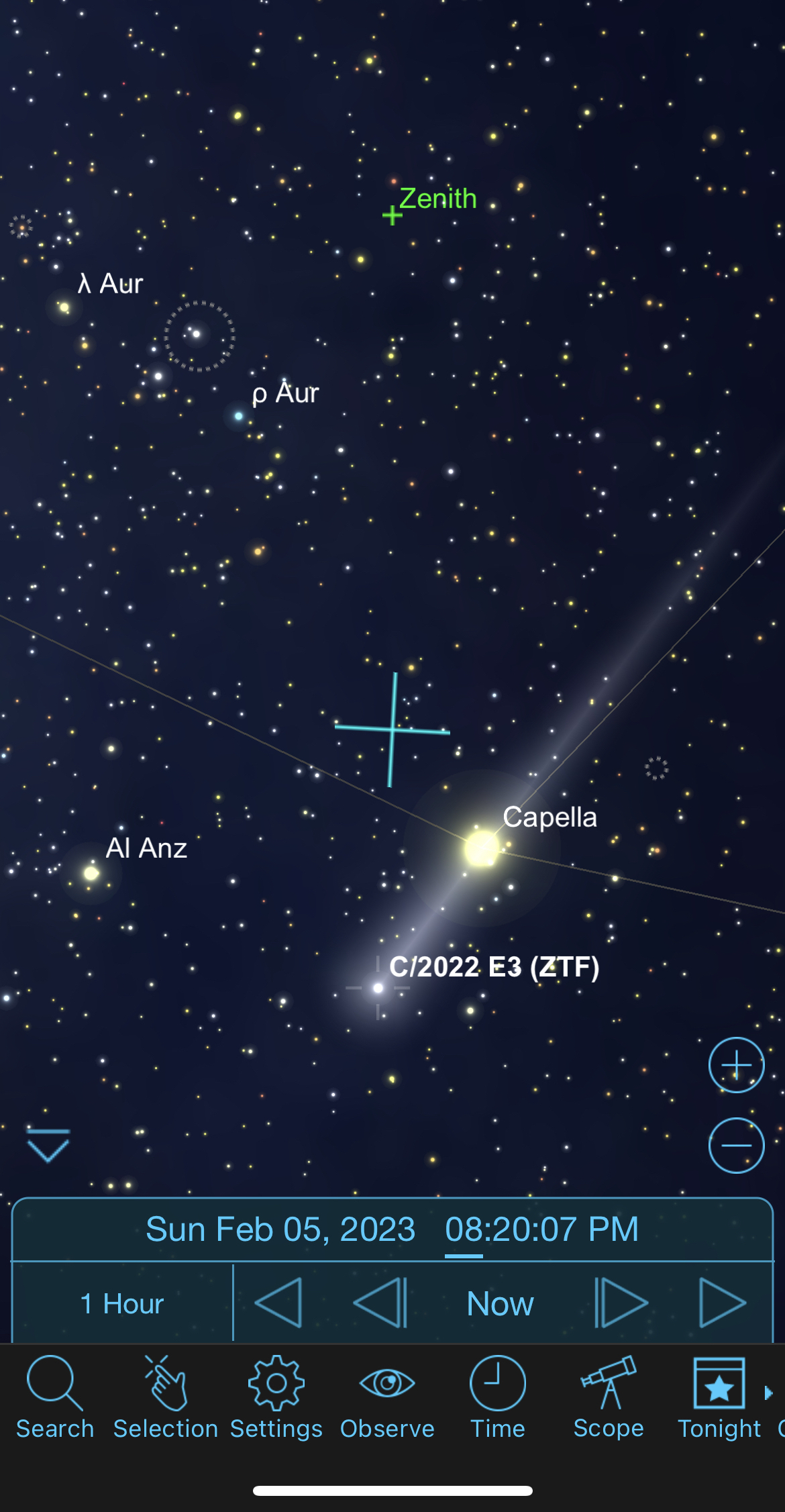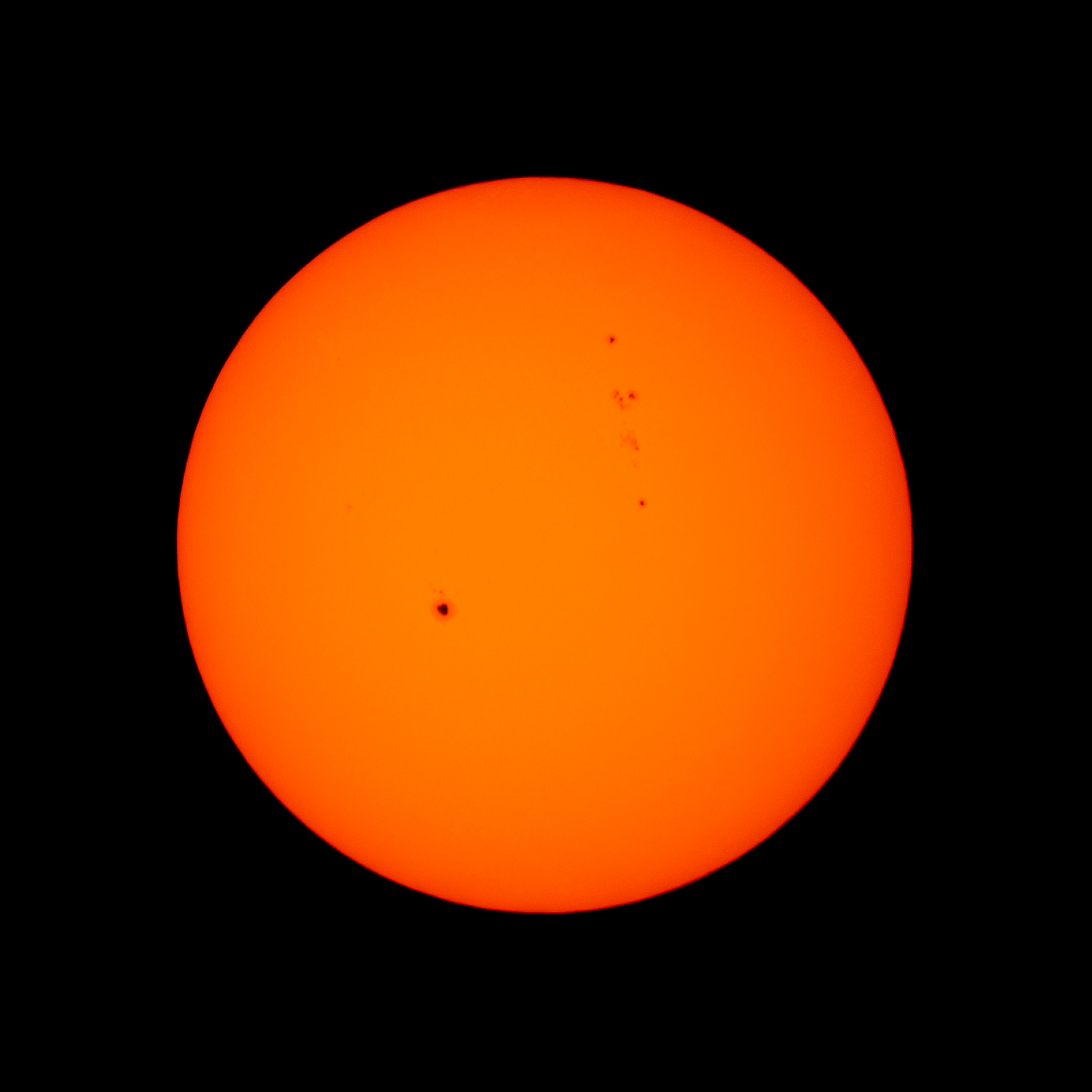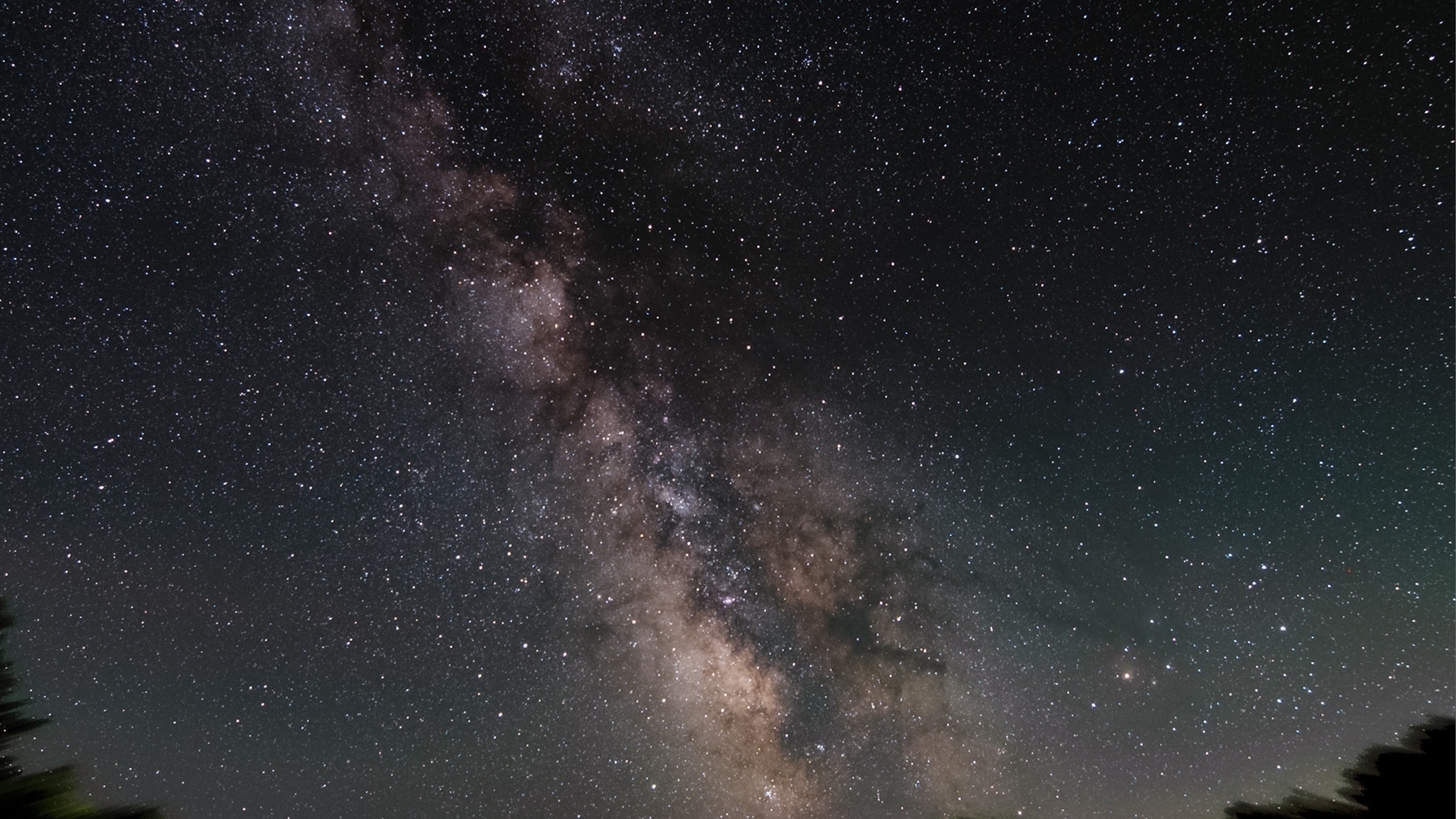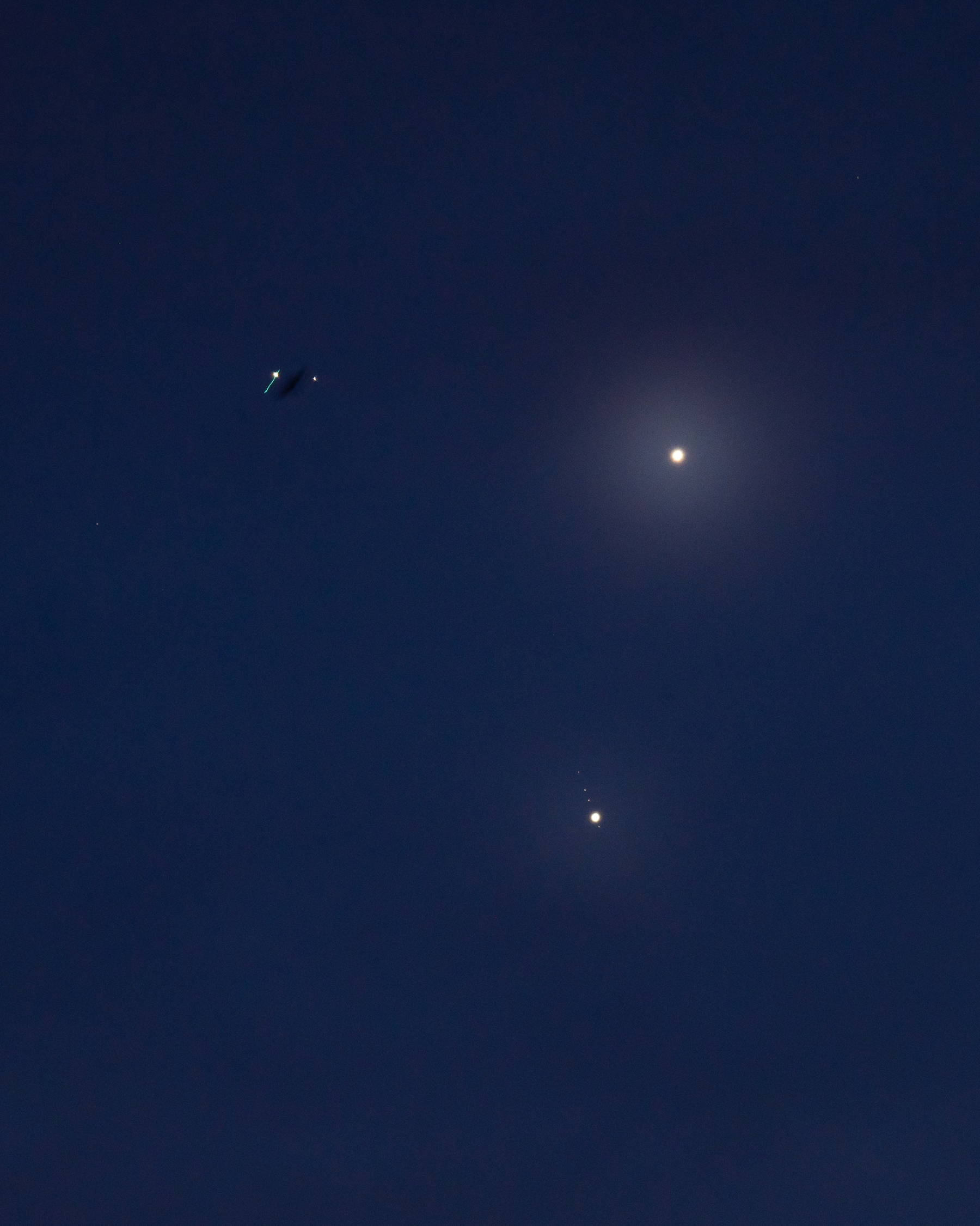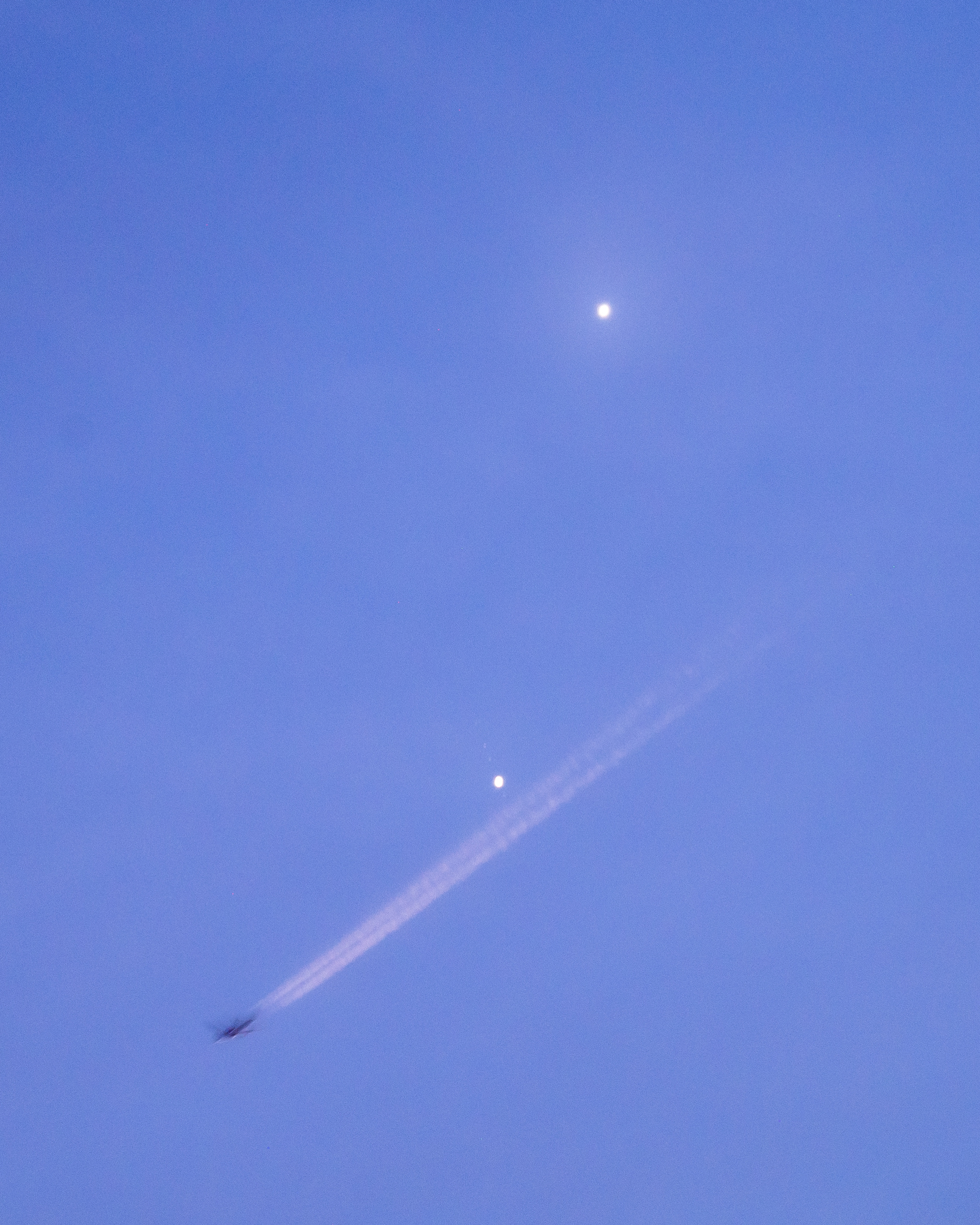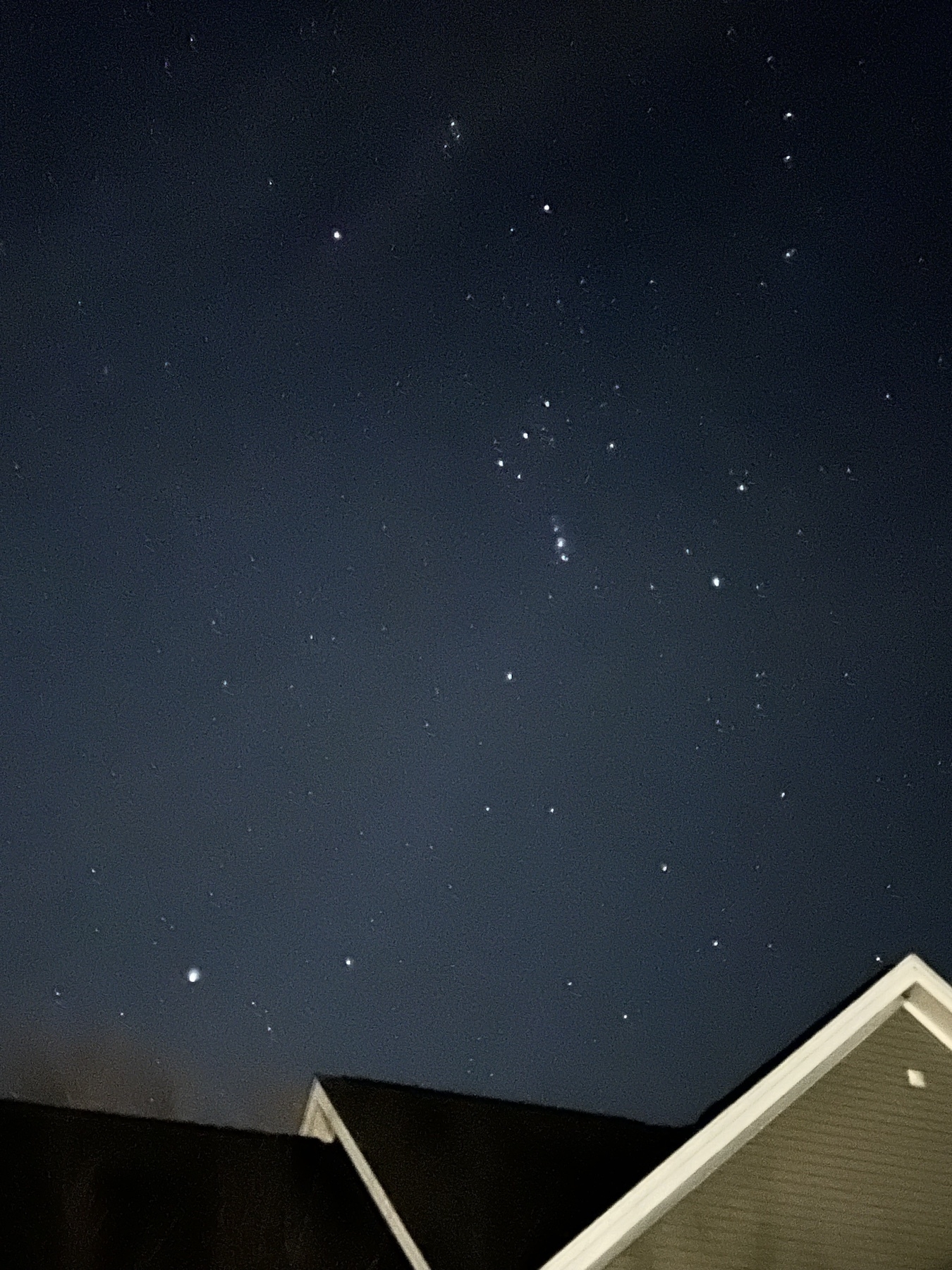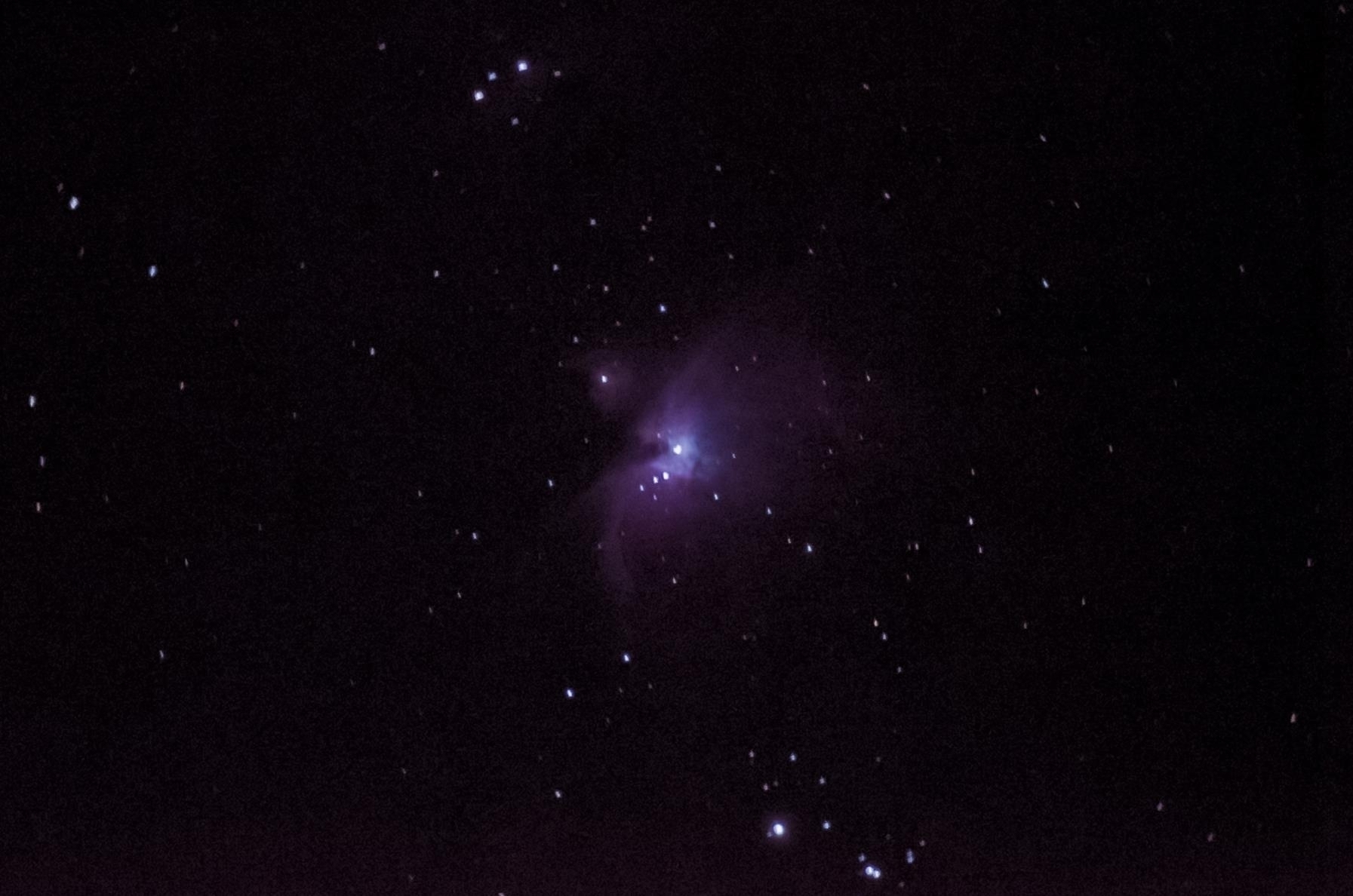Astro
With all the rainy weather, Canadian smoke and short Summer nights, there was no chance to do any astrophotography in last couple of months. Here is an image from April taken as a screenshot while setting up a Venus in Pleiades shot. The spikes are generated by a Bathinov mask and help in focusing.
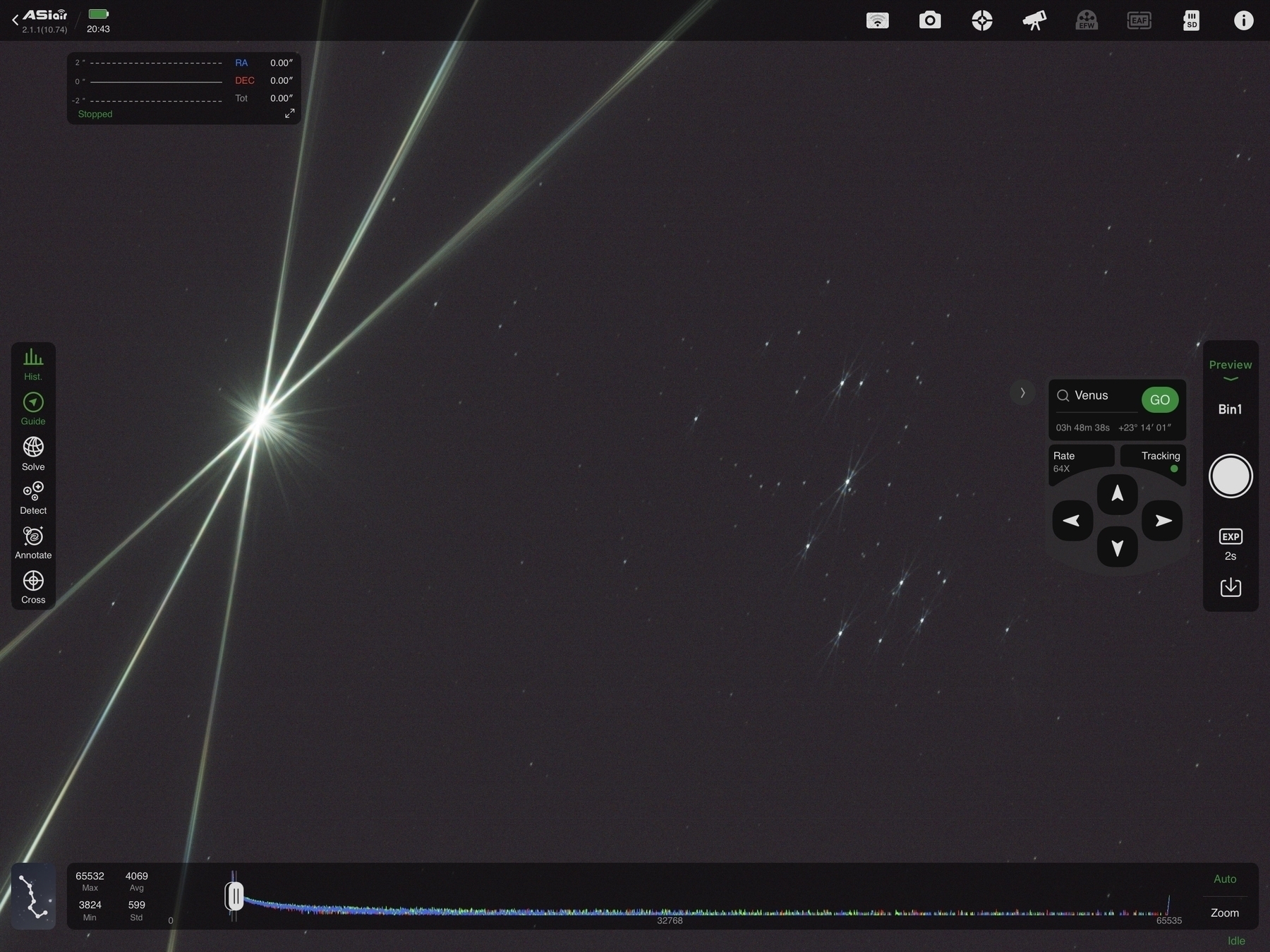
Mars and the Beehive star cluster (M44) in Cancer, which is one of the closest star clusters to us (at about 600 light years) and it can be seen with naked eyes. All the stars in this cluster are quite young - only ~600 million years of age.
#astro
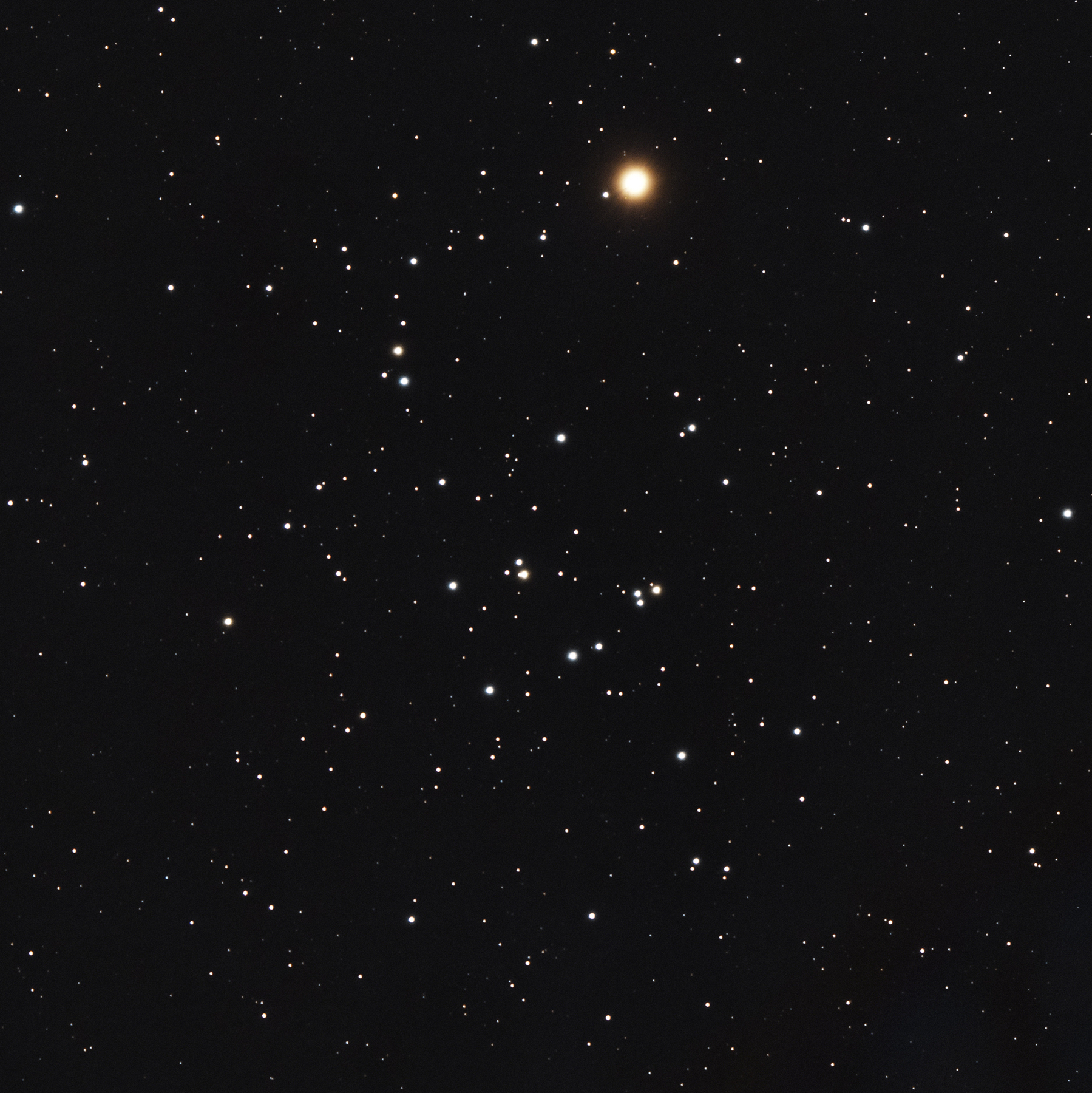
Needle galaxy and other distant galaxies
The needle galaxy (NGC4565) - perfect edge-on view of a spiral galaxy that is at about 30 light years away.
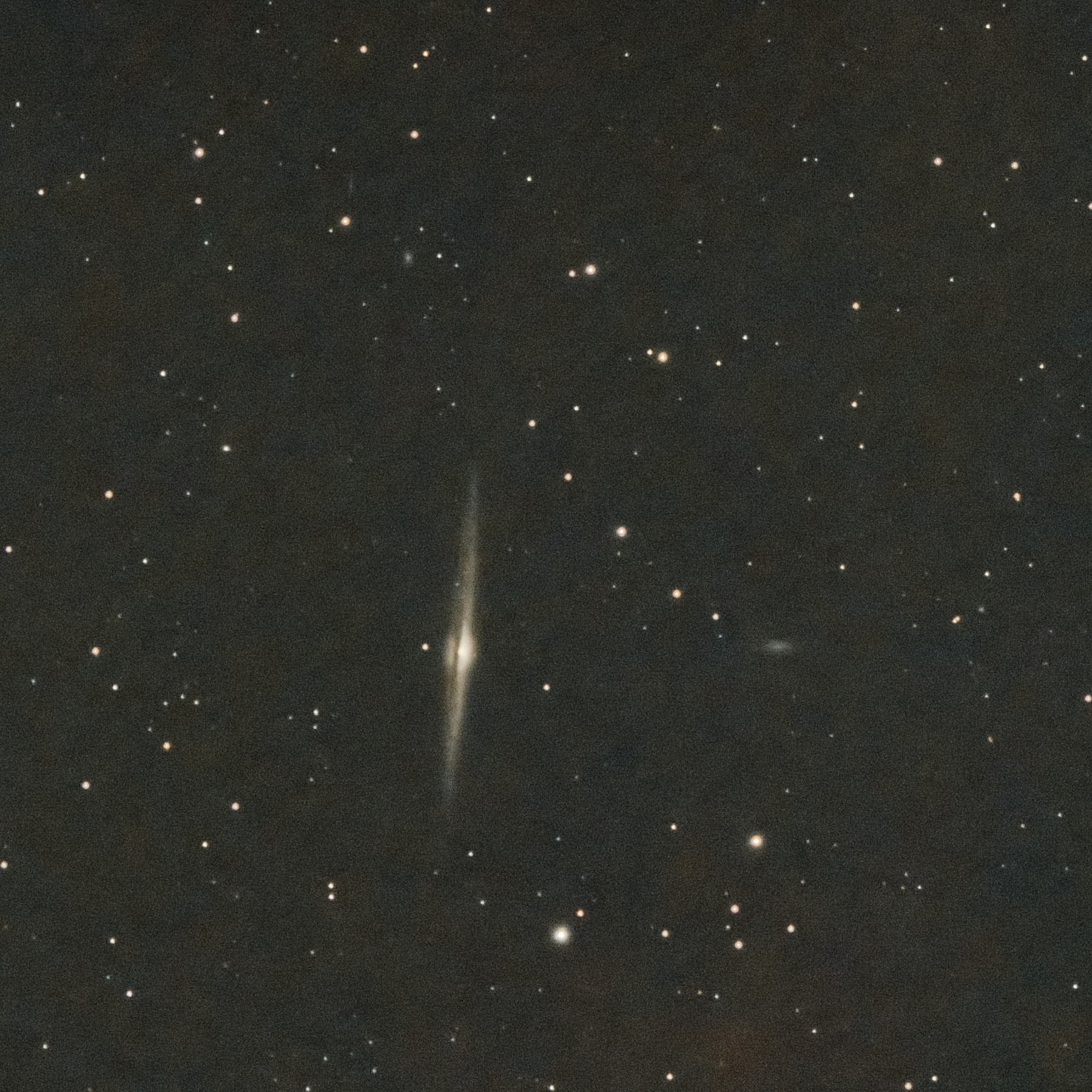
Captured a couple more galaxies in the same photo. The ones marked with yellow circle (PGC41976, NGC4565C) are at 310 million light years away. The one in red circle (IC3533) is 429 million light years away. This is probably the farthest object I have captured so far.
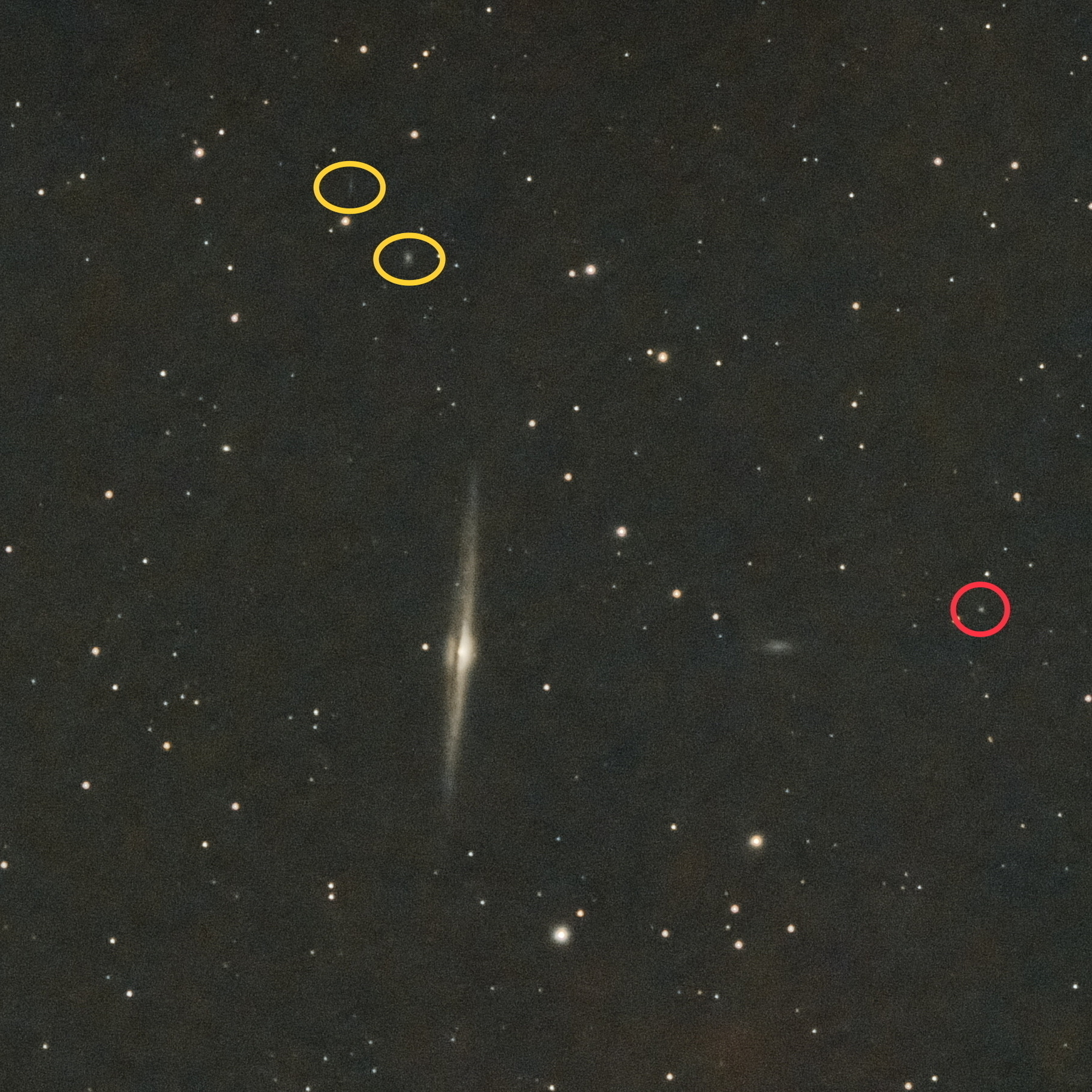
This image is a stack of sixty 2 minute exposures taken with ZWO ASI533MC-Pro camera attached to William Optics ZS61 telescope.
Supernova SN2023ixf was spotted on May 19th and it continues to brighten. The top image is from May 23rd and an image from April 30th on the bottom. This supernova is in galaxy M101 which is 21 million ly away -> this “live in real-time” event actually happened 21 million years ago.
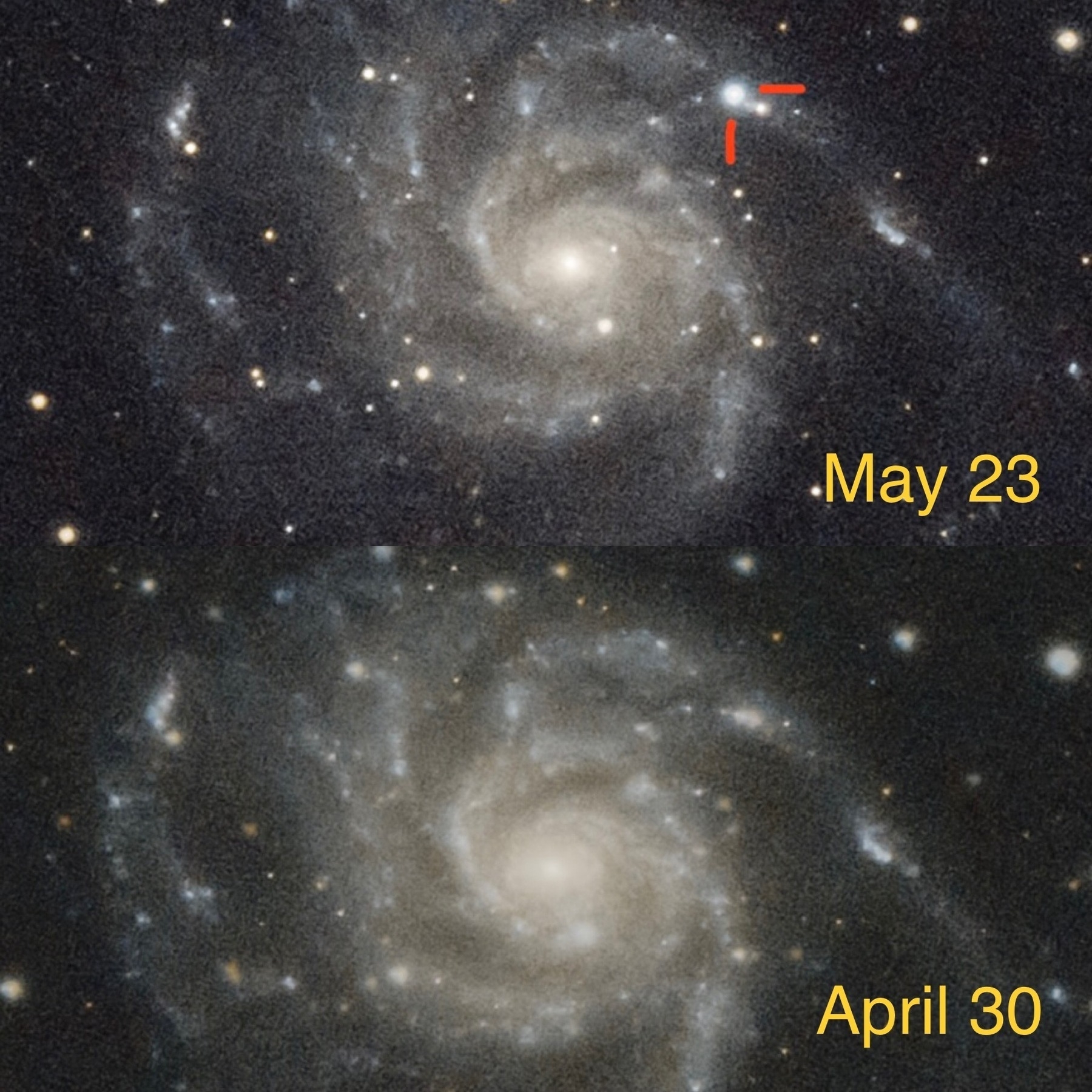
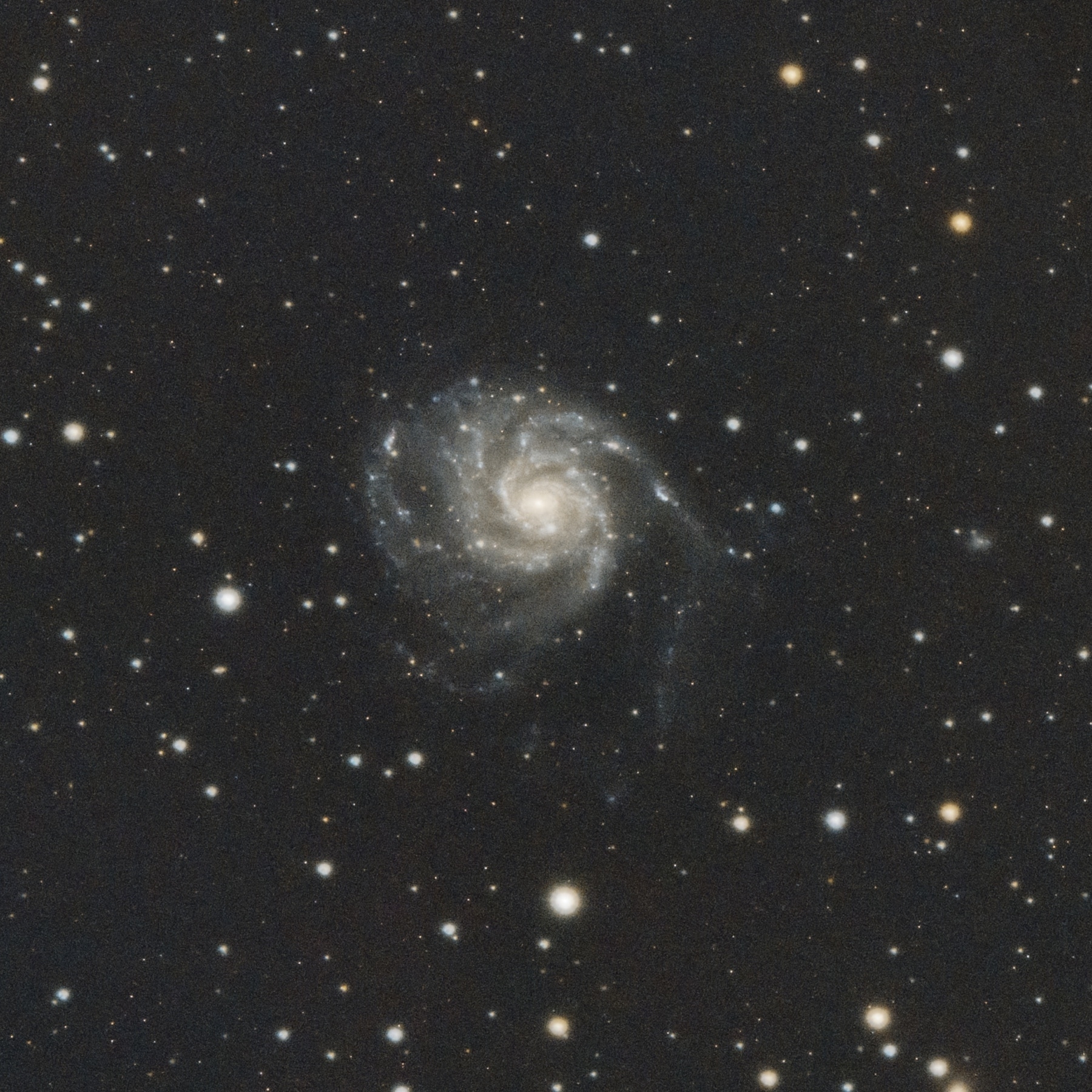
A face-on spiral galaxy, M101 aka the Pinwheel galaxy is at 21 million light years away in Ursa major and contains about 1 trillion stars. This image is a stack of sixty 2-min exposures.
The Rosette nebula from Monoceros constellation at 5K light years is one of the brightest nebula in the sky. The cluster of young stars (~4mil yrs) in the center provides the energy that makes this cloud glow. As always the streaks of dark dust are the striking features. #astro
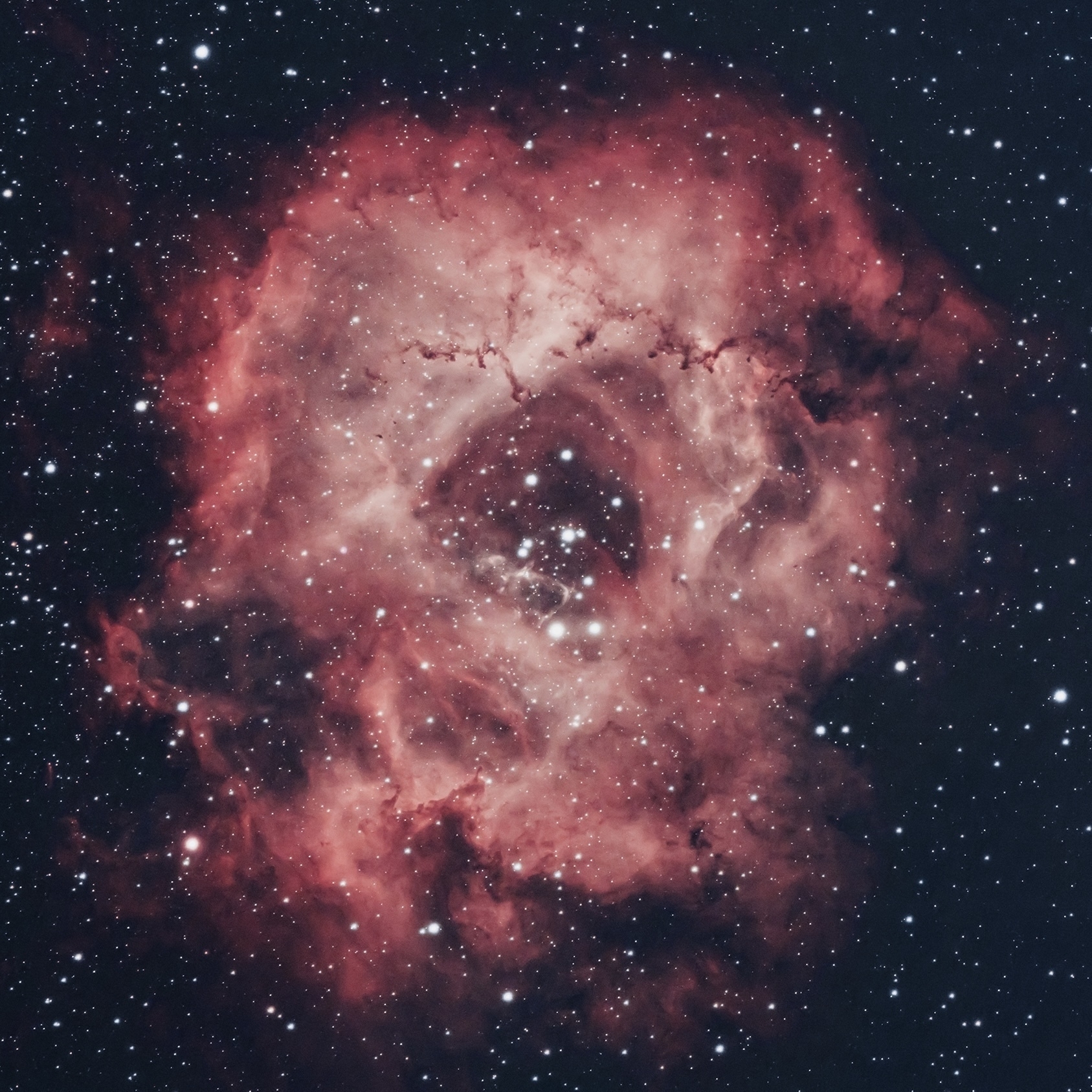
Mars visiting Gemini. Open star cluster M35 at the bottom is at 2600 light years away and made up of young stars that are only 100 million years old. At the bottom right, the cluster of yellow stars (NGC2158) is made up of stars that are 10 times older and 6 times farther. #astro
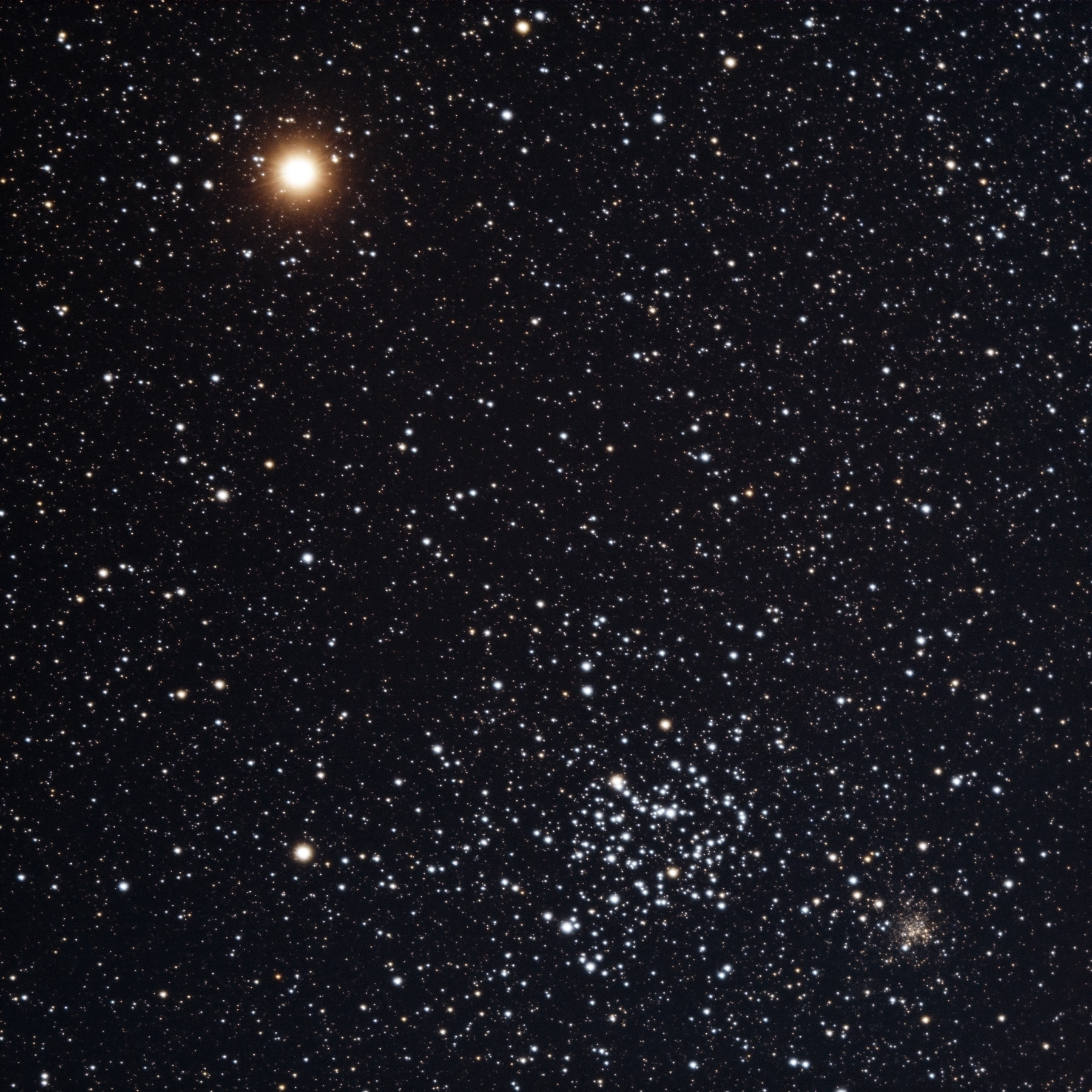
After missing the closest approach yesterday, I was relieved that I caught some break in the clouds to view the Venus and Jupiter conjunction.
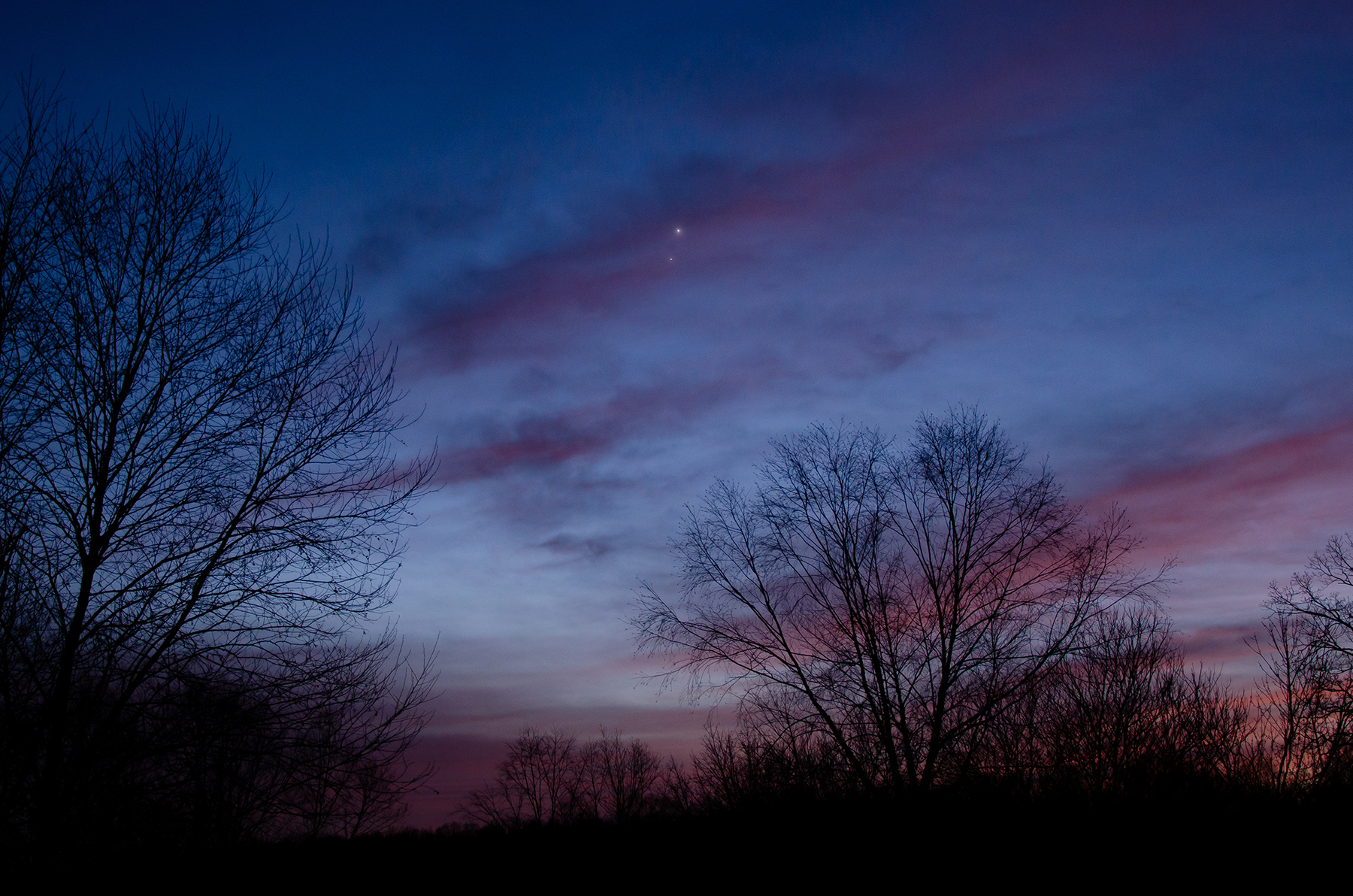
The cloud bands added a nice glow to the planets. The Gallelian moons Callisto, Ganymede, and Europa are seen above Jupiter and Io is on the other side.
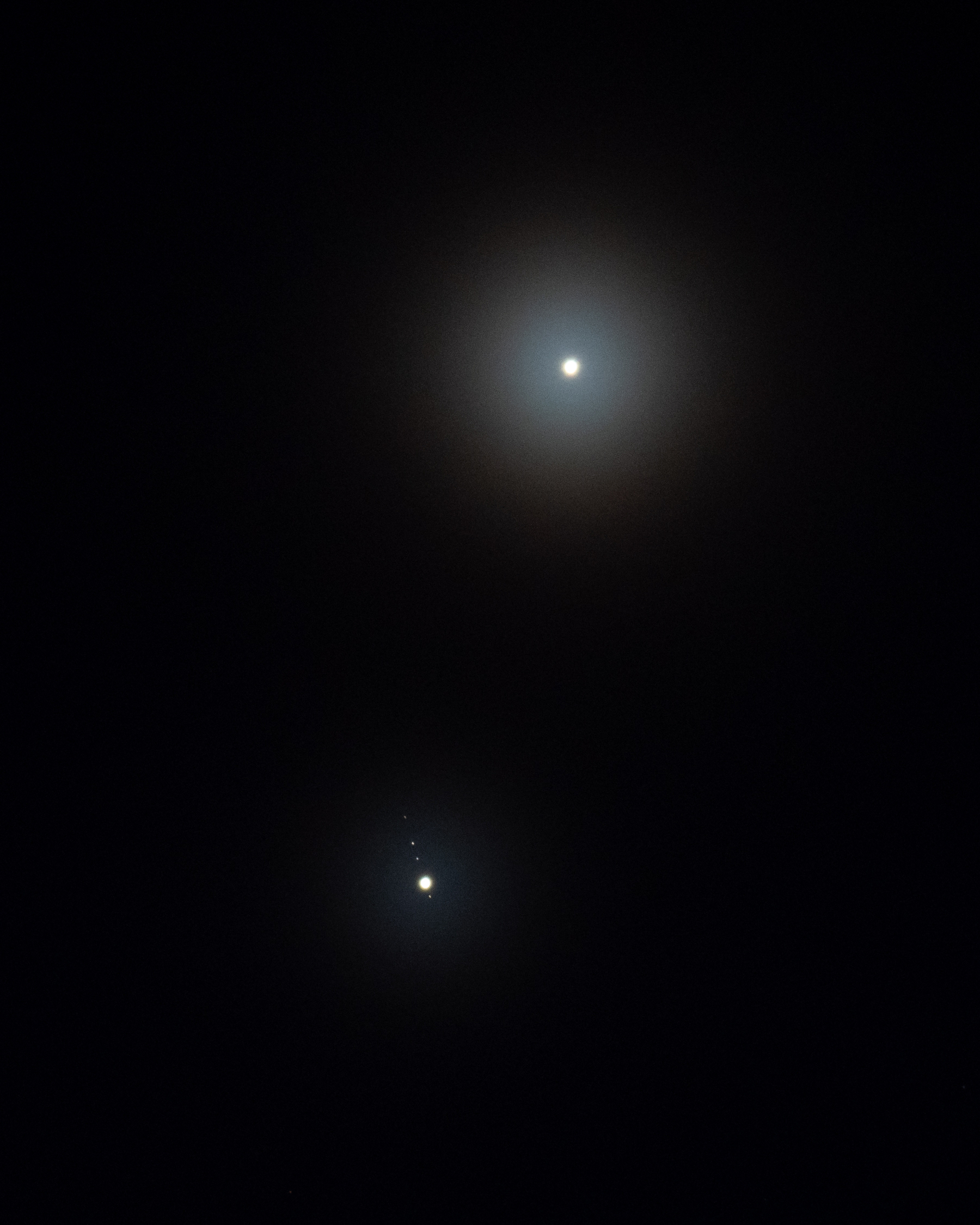
Caught Jupiter and Venus conjunction tonight through a break in cloudy weather.
#mbmar
March Photo Challenge
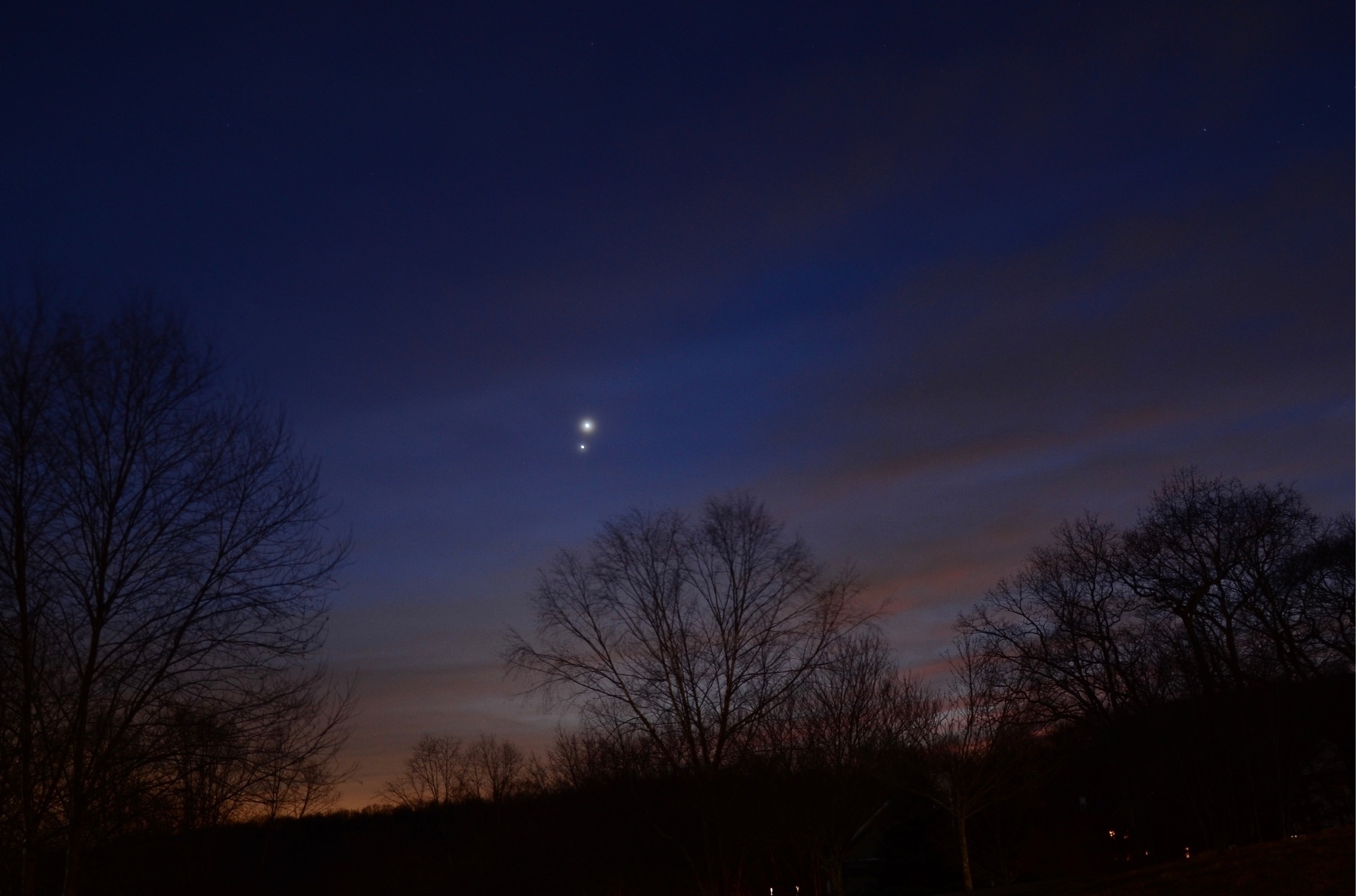
Moon, Jupiter and Venus in the western sky. Couldn’t catch them when they were closer to each other a couple of days ago. In the third photo, the moons of Jupiter can be seen if you zoom in.
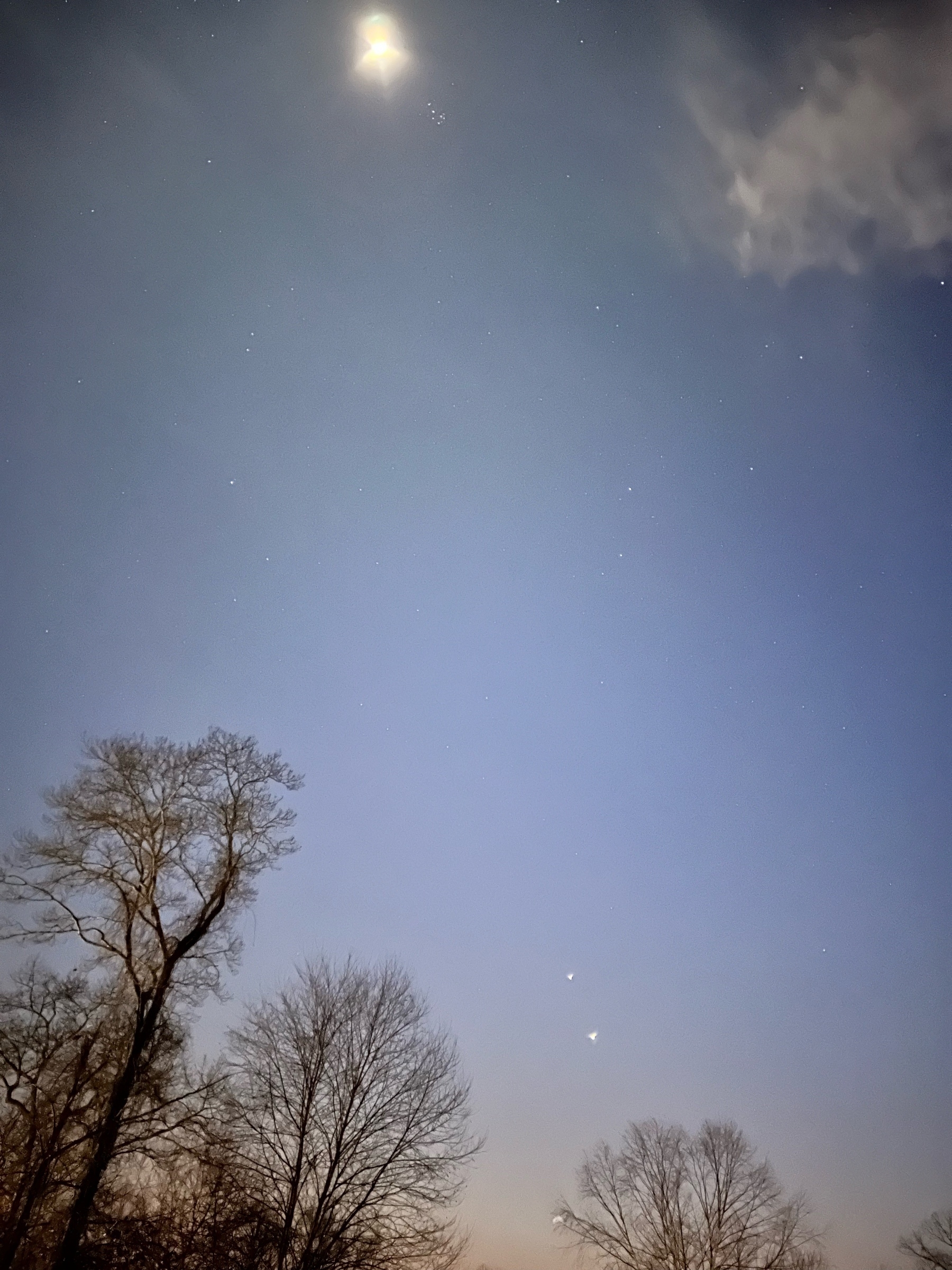
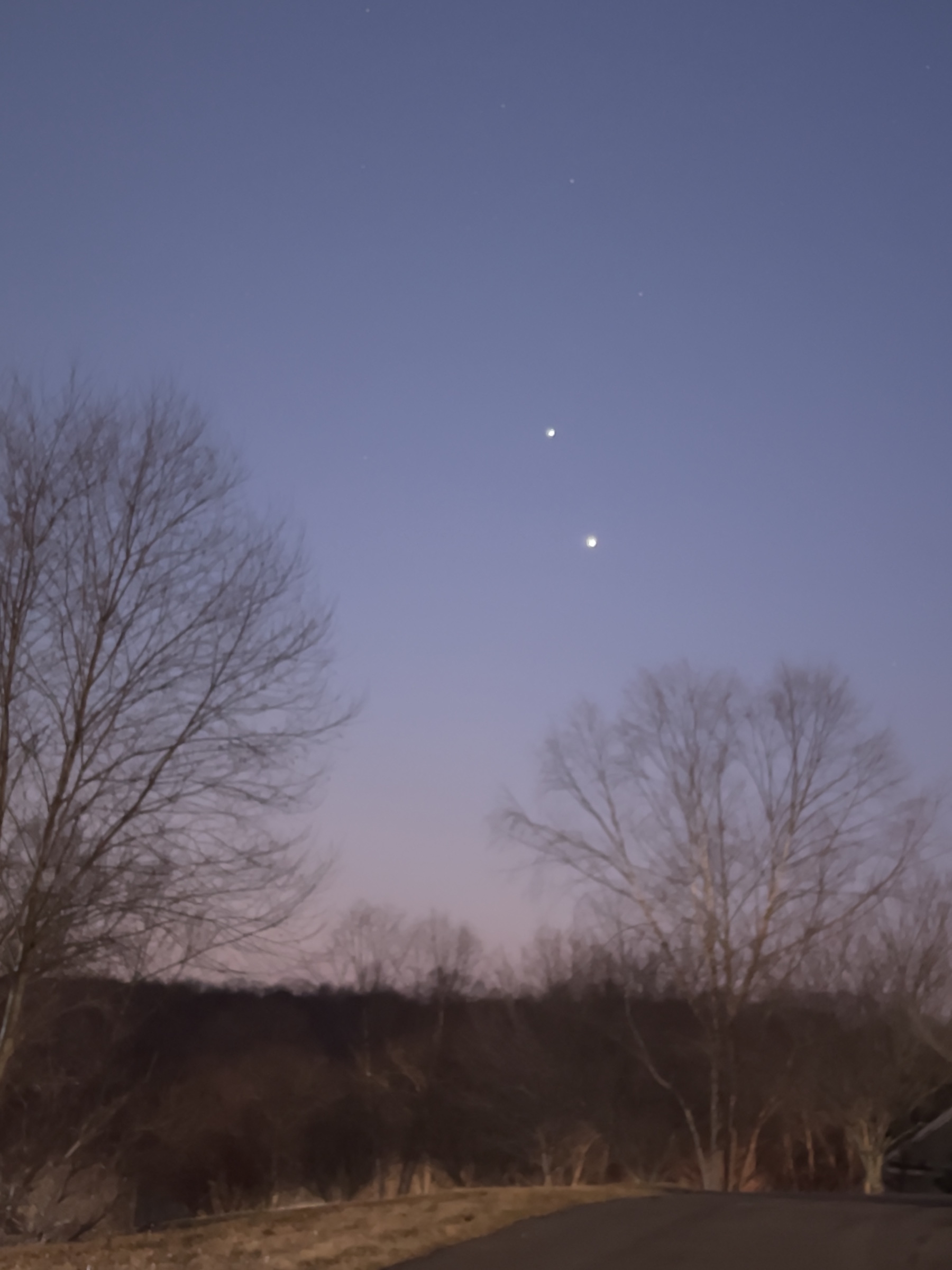
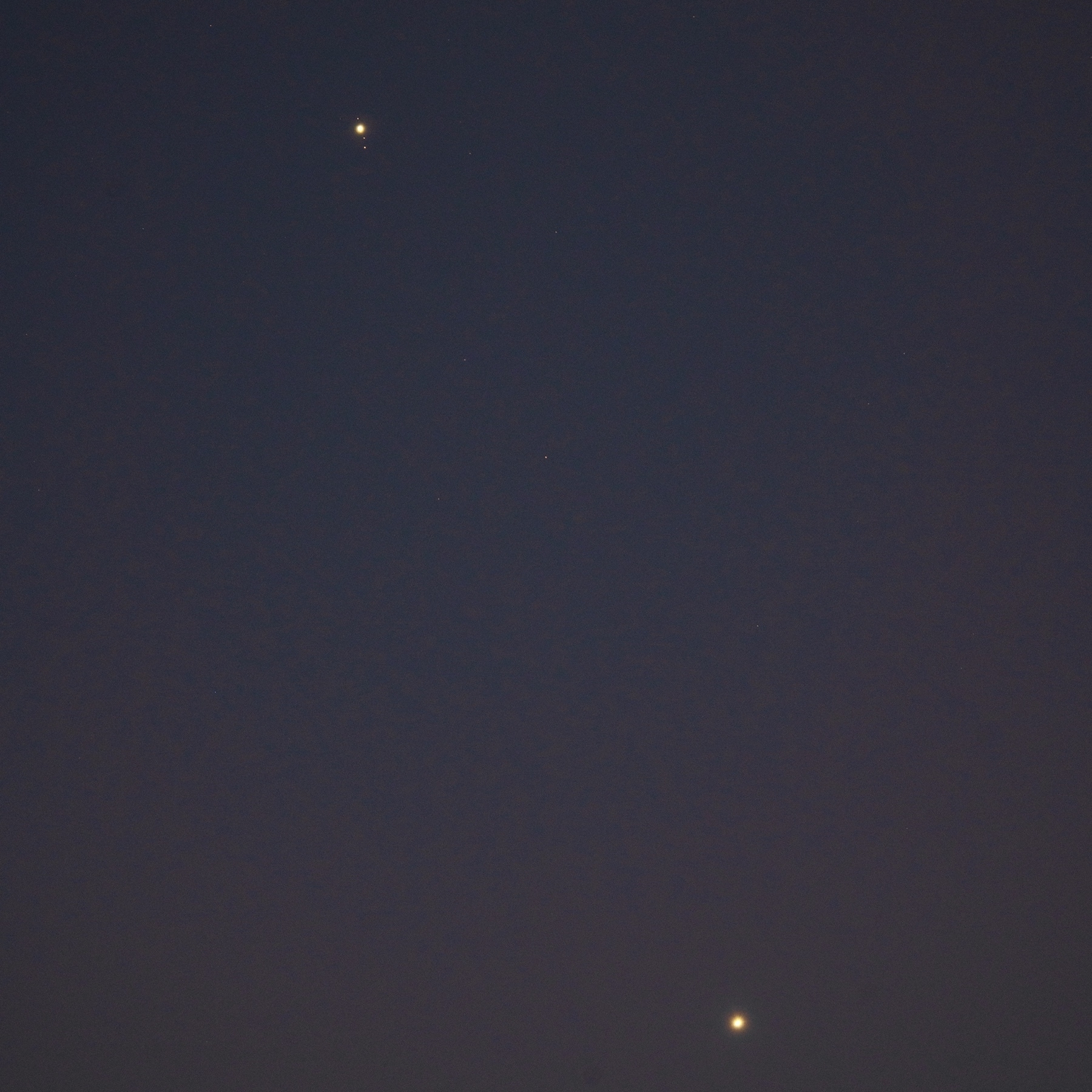
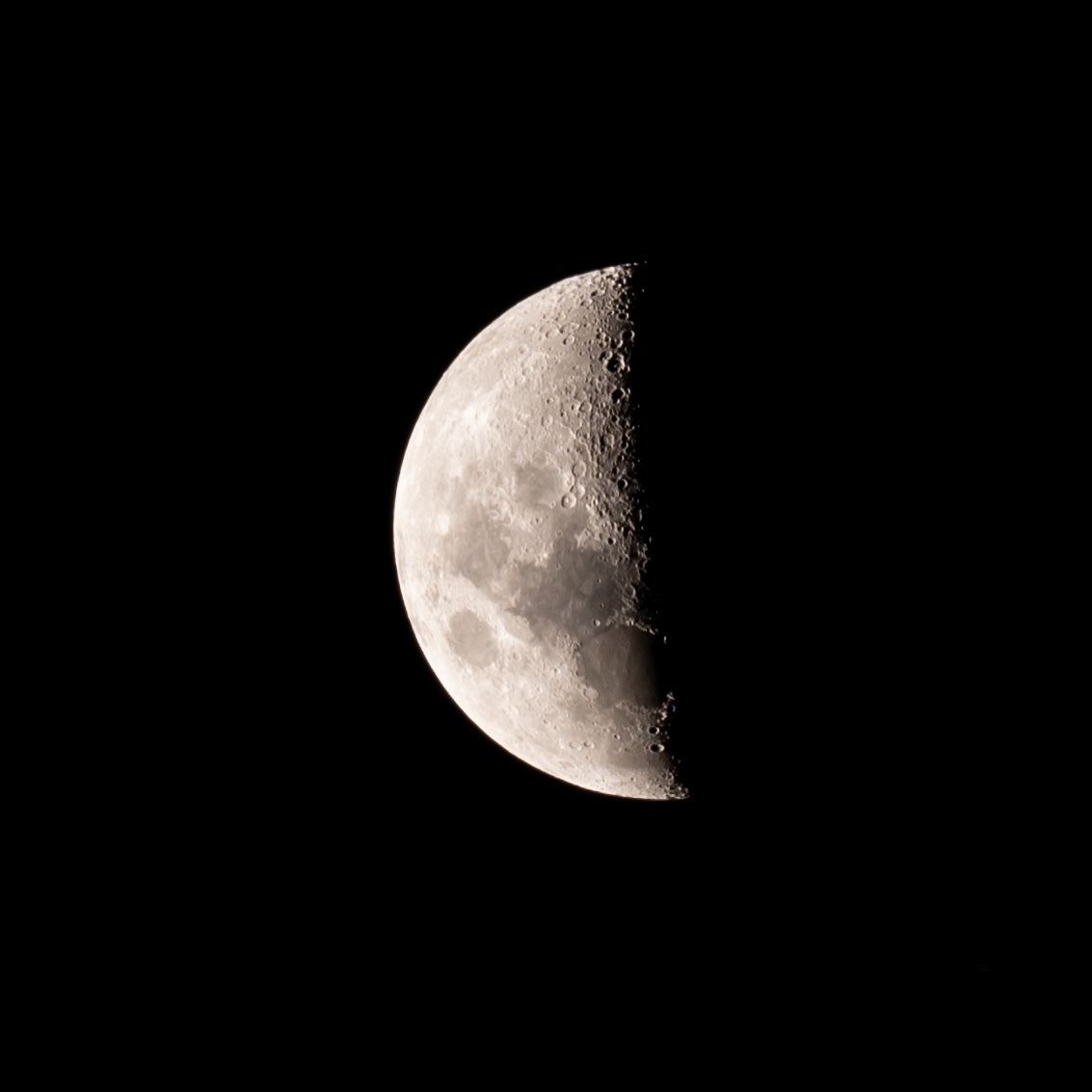
Flame and Horsehead nebulae shining brightly along with blinding Alnitak. So satisfying to see this with only forty minutes (20x2min) exposures.
#astro
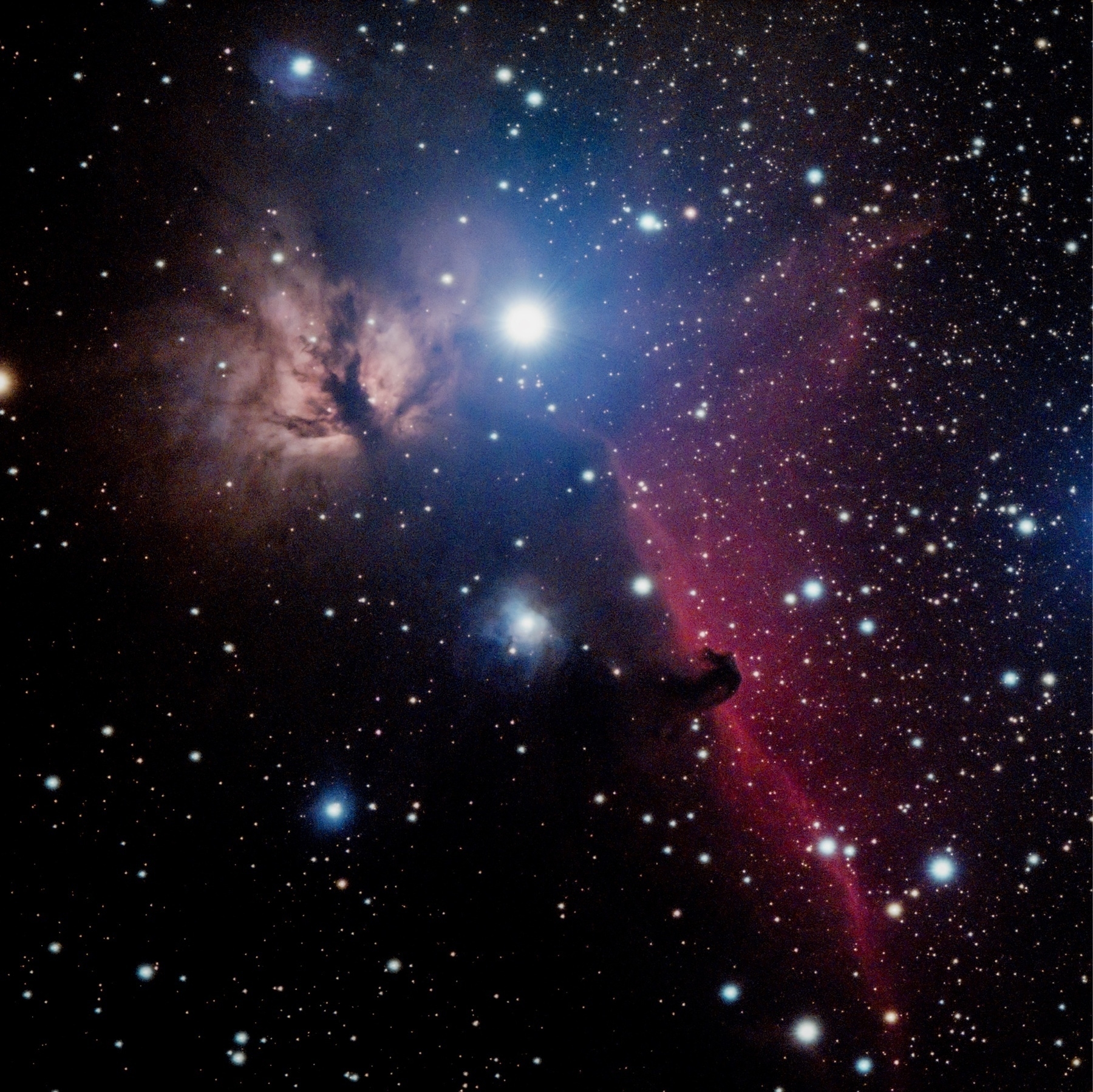
Jupiter and Venus are lighting up the western sky. They will come very close to each other in 2 weeks.
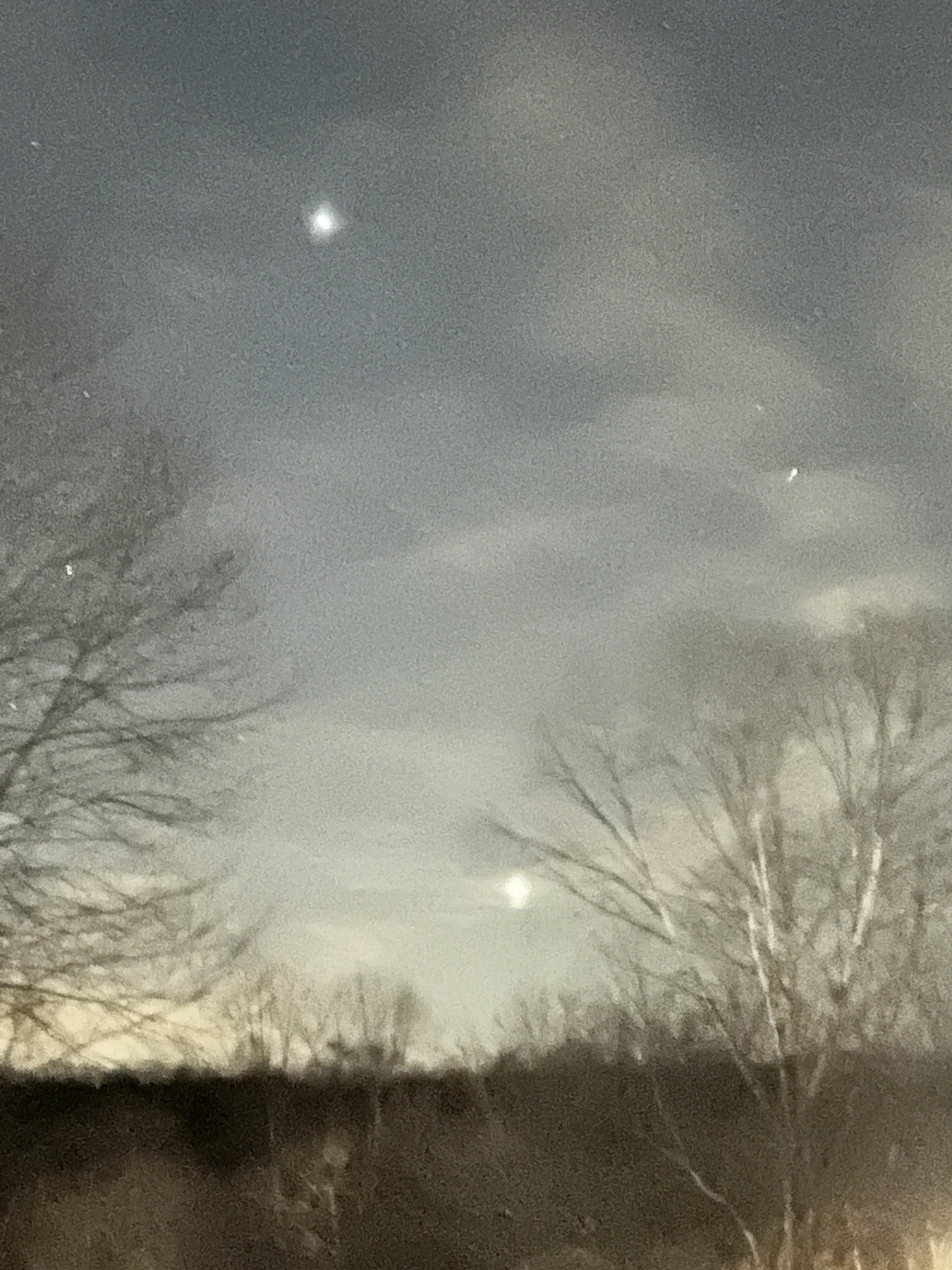
#astro
Got this photo of Elephant trunk nebula printed on canvas. It looks quite good considering its big size - 20x30 inches. Wasn’t sure how it will turn out. Last week, it was also featured on this website. They wrote such a nice description.
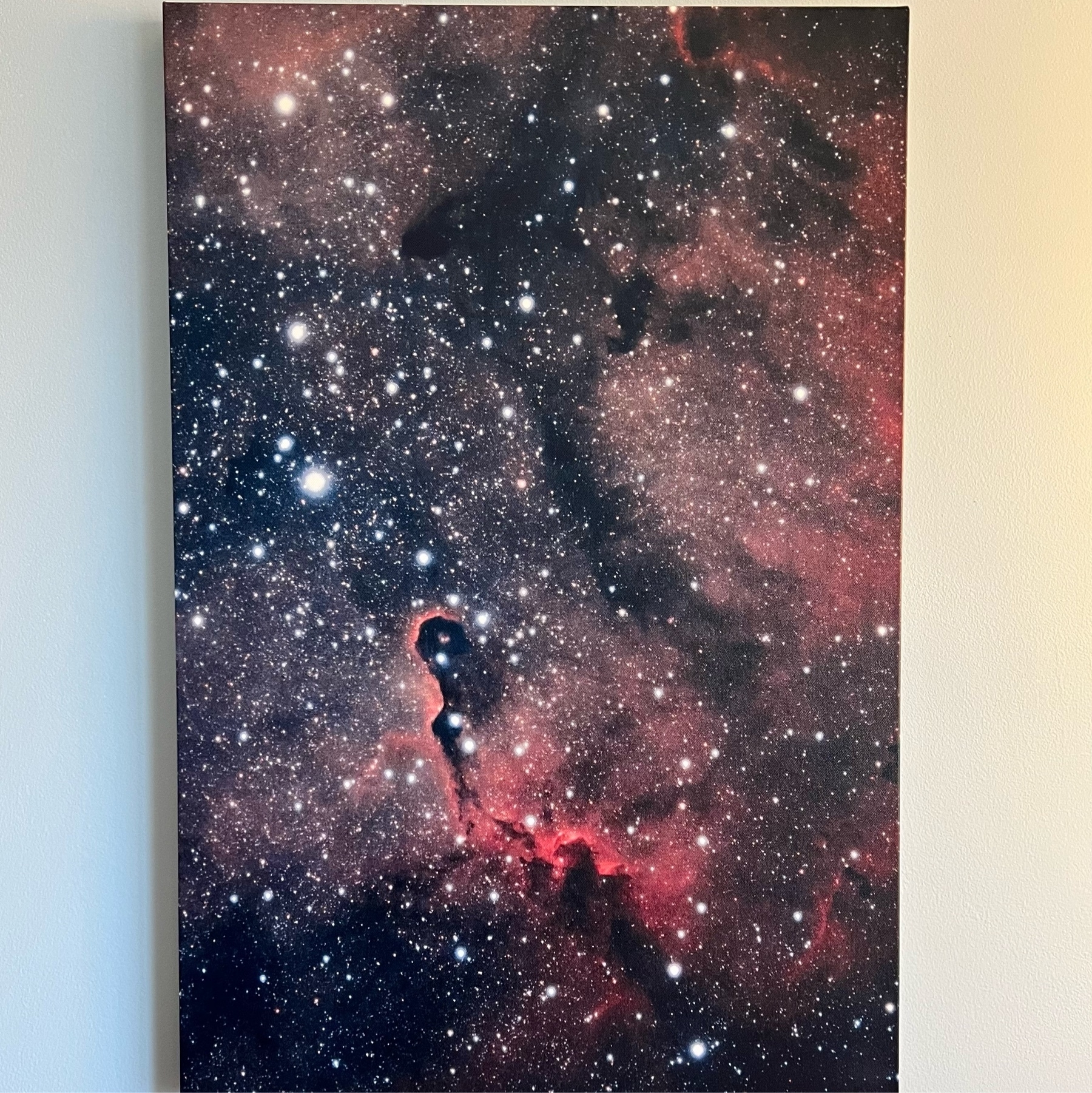
#astro
This must be my best effort at capturing the running man and Orion nebulae so far. This nebula is a region of massive star formation and is closest of such kind to Earth at ~1300 light years.
Only 40 one minute subs taken without any narrowband filter.
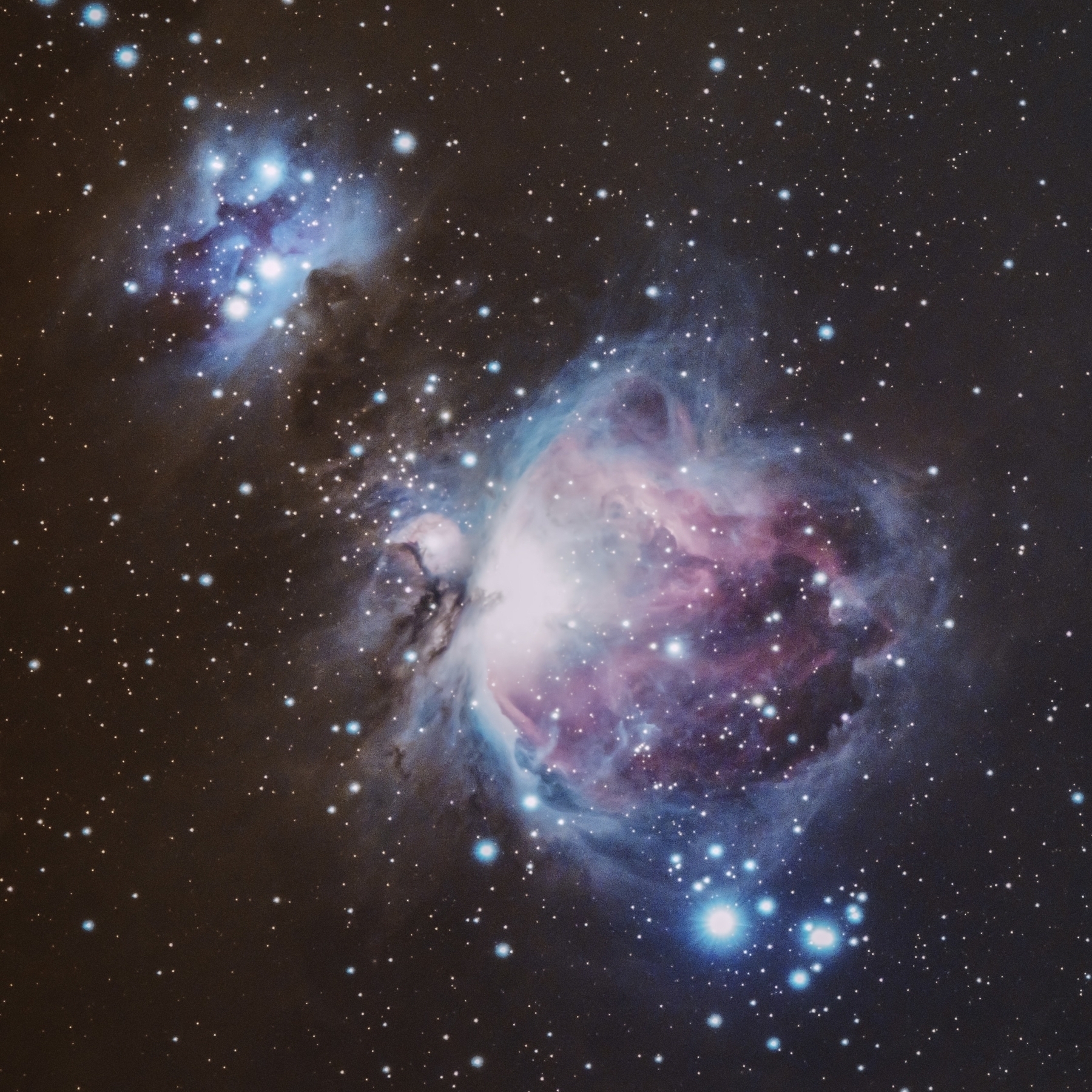
The green comet is so close to a bright star, Capella right now. I’d be out taking pictures if there were no clouds covering it all up. ☹️☹️
